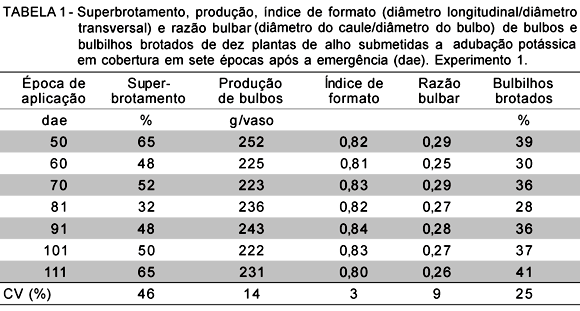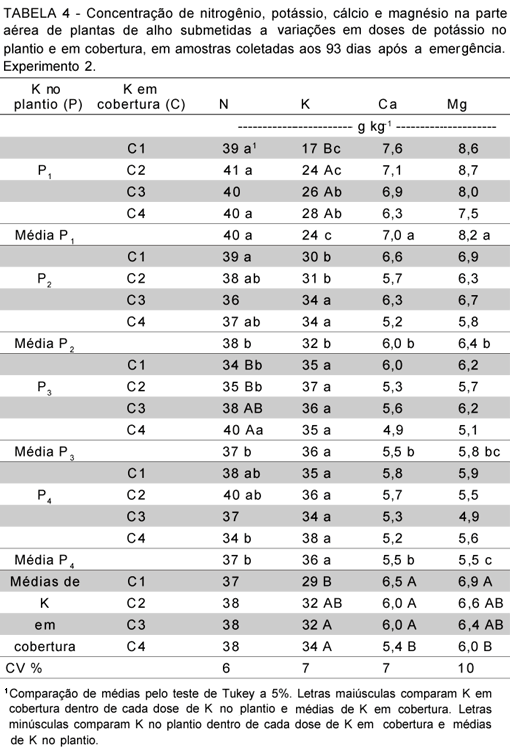The objective of this study was to evaluate the effects of spliting potassic fertilization on pseudobudding and bulb yield of vernalized garlic (Allium sativum L.) grown in 55 L pots under greenhouse conditions, and also to estimate the best application time. In a first experiment half of the necessary potassium rate for the crop was applied at 50, 60, 70, 81, 91, 101 and 111 days after the emergence (dae), and in a second experiment consisted of four potassium rates at sowing, combined with other four at 81 dae. The spliting of the potassic fertilization at different development stadia did not affect the bulb yield and pseudobudding. The contents of K, Ca and Mg in the leaves were influenced by the potassium applied at sowing and at 81 dae; an antagonistic effect being observed in relation to potassium and contents of Ca and Mg in the leaves. The increase of soil potassium level at the sowing stage lead to increase of bulb yield, and this was not influenced by potassium rates applied at 81 dae.
garlic; potassic fertilization





